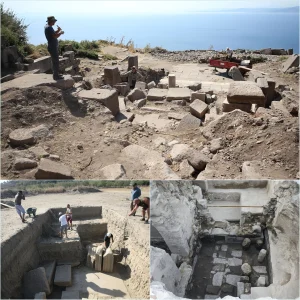Recently, archaeologists have unearthed a remarkable find in a Danish bog: a human “bog body” believed to be part of a ritual sacrifice dating back 5,000 years. This discovery sheds light on ancient customs and beliefs of the Nordic region during the Neolithic period.

The bog body, found near the town of Møgeltønder in southern Denmark, is remarkably well-preserved due to the unique conditions of the bog environment. These conditions, characterized by low oxygen and acidic water, have famously preserved bodies and artifacts over millennia.

Initial analysis suggests that the body belonged to a man who lived around 3,000 BC. The precise circumstances of his death are still under investigation, but archaeologists hypothesize that he may have been a victim of a ritual sacrifice, possibly associated with religious or ceremonial practices of the time.

Bog bodies are significant archaeological finds because they offer insights into ancient cultures’ beliefs, practices, and even the physical appearance of individuals from the distant past. They are often found with well-preserved clothing and artifacts, providing valuable clues for researchers studying prehistoric societies.
The discovery in the Danish bog underscores the ongoing importance of careful archaeological exploration and preservation efforts, as each find contributes to our understanding of human history and cultural evolution. As research continues on this newly discovered bog body, more details are expected to emerge about its historical and cultural significance.





